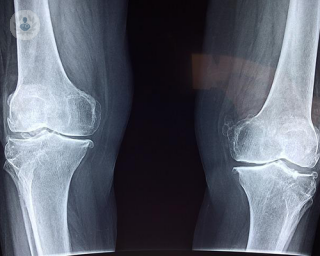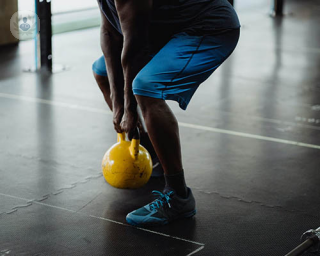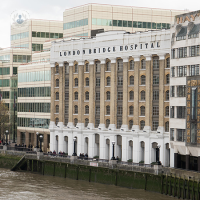Kneecap replacement
Mr Andrew Miller - Orthopaedic surgery
Created on: 02-20-2018
Updated on: 03-22-2023
Edited by: Karolyn Judge
What is kneecap replacement surgery?
Kneecap replacement surgery, which is also known as patellofemoral replacement or patellofemoral arthroplasty, involves the damaged bone and cartilage both being resurfaced with plastic or metal components. This type of surgery is considered a partial knee replacement as only a section of the knee is resurfaced. Patellofemoral refers to the section of the knee that includes the patella (kneecap) and the groove in the thighbone which the patella rests in.

Why might kneecap replacement surgery be required?
Knee cap surgery is usually required in patients suffering from knee osteoarthritis which is when the cartilage protecting the knee bones is gradually worn away, exposing the bone. A lack of cartilage here results in painful movement. Patients should consider kneecap replacement if non-surgical treatments are no longer effective in providing relief.
Patients whose knee bone and cartilage damage is limited to the kneecap (patella) and the groove in the thighbone that the kneecap rests in are candidates for this form of knee cap surgery. It is an alternative to total knee replacement surgery and involves a much smaller incision, and hence recovery can be swifter.
What does kneecap replacement surgery involve?
In kneecap replacement surgery, the surgeon makes an incision in the front of the knee, after which the damaged cartilage is fully inspected. Afterwards, the bone is prepared by having damaged cartilage and a small amount of bone removed from the patellofemoral section of the knee. Once the bone is prepared, the implants are positioned. A metal femoral implant resurfaces the groove in the thighbone, whilst a plastic patella resurfaces the underside of the patella. The implants are secured to the bone using a special cement.
How do you prepare for kneecap replacement surgery?
Kneecap replacement surgery does involve anaesthesia and the choice is either general anaesthesia or spinal anaesthesia (where you would remain awake, but the body would be numb from the waist down).
Post-operative care after having kneecap replacement surgery
Once the kneecap replacement procedure is complete, you are monitored closely whilst the anaesthesia wears off. Sometimes this procedure is carried out on an outpatient basis, so discharge can be quick. Pain following kneecap replacement surgery is expected which can be managed with prescribed painkillers. Putting weight on the knee after surgery is recommended, using a walking aid for a few days following the operation. A number of physiotherapy exercises will be given which help to restore strength and motion to the knee.
As kneecap replacement is not a total knee replacement, sometimes down the line there is a need for further surgery.
Which specialist performs a kneecap replacement surgery?
Orthopaedic surgeons are responsible for carrying out kneecap replacement surgery.














